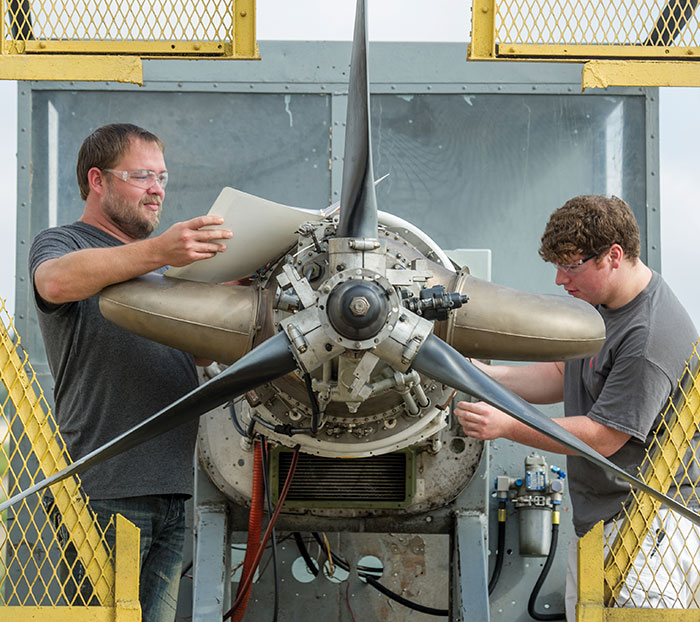The Airframe and Powerplant Practice Test, a pivotal assessment in aviation, stands as a gateway to a world of opportunities. This comprehensive guide delves into the intricacies of the test, empowering aspiring aviators with the knowledge and strategies to excel.
This meticulously crafted resource unveils the test’s structure, question types, and study techniques, providing a roadmap to success. With expert insights and practical guidance, readers will embark on a journey of preparation that culminates in a confident and successful performance on the Airframe and Powerplant Practice Test.
Airframe Structure and Design: Airframe And Powerplant Practice Test
The airframe of an aircraft is the primary structural component that provides the shape and support for the aircraft’s other systems and components. It consists of several key components:
- Fuselage: The main body of the aircraft that houses the passengers, cargo, and crew.
- Wings: Airfoils that generate lift and provide stability.
- Empennage: The tail section that provides stability and control.
- Landing gear: The system that supports the aircraft on the ground and allows for takeoff and landing.
Different types of aircraft airframes include:
- Monoplane: A single-wing aircraft.
- Bipolar: A two-wing aircraft.
- Cantilever: A wing that is not supported by external struts or wires.
- Braced: A wing that is supported by external struts or wires.
The materials used in airframe construction include:
- Aluminum: Lightweight, strong, and corrosion-resistant.
- Titanium: Strong, lightweight, and heat-resistant.
- Composite materials: Strong, lightweight, and corrosion-resistant.
Powerplant Systems

Aircraft powerplants provide the thrust required for flight. The most common types of aircraft engines include:
- Reciprocating engines: Piston-driven engines that use internal combustion to generate power.
- Turbine engines: Jet engines that use compressed air to generate power.
- Rocket engines: Engines that use the combustion of propellants to generate thrust.
The components of an aircraft powerplant system include:
- Engine: The primary source of power.
- Fuel system: The system that supplies fuel to the engine.
- Exhaust system: The system that expels exhaust gases from the engine.
Factors that affect aircraft engine performance include:
- Altitude: Decreased air density at higher altitudes reduces engine power.
- Temperature: High temperatures can reduce engine power.
- Airspeed: Increased airspeed can increase engine power.
Practice Test Format and Content

The airframe and powerplant practice test is a multiple-choice exam that covers the following topics:
- Airframe structure and design
- Powerplant systems
- Aircraft maintenance and repair
- Aircraft regulations and safety
The test typically consists of 60-100 questions and is timed.
Study Tips and Resources
To prepare for the airframe and powerplant practice test, it is recommended to:
- Study the relevant material thoroughly.
- Take practice tests to familiarize yourself with the format and content.
- Review and practice regularly.
Recommended study resources include:
- Airframe and Powerplant Mechanics General Handbook
- Aircraft Maintenance and Repair Manual
- FAA Airframe and Powerplant Practice Tests
Career Implications

Passing the airframe and powerplant practice test is a requirement for individuals who want to work as aircraft mechanics or technicians. These professionals are responsible for the maintenance and repair of aircraft, ensuring their safety and performance.
Job responsibilities for aircraft mechanics and technicians include:
- Inspecting and diagnosing aircraft systems
- Repairing and replacing aircraft components
- Performing routine maintenance
The earning potential and job outlook for aircraft mechanics and technicians are generally positive. According to the U.S. Bureau of Labor Statistics, the median annual salary for aircraft mechanics and technicians was $64,990 in May 2021. The job outlook is expected to grow by 10% from 2021 to 2031.
Answers to Common Questions
What is the format of the Airframe and Powerplant Practice Test?
The test typically consists of multiple-choice questions covering a range of topics related to airframe structure, powerplant systems, and aviation regulations.
How can I prepare effectively for the test?
Thorough preparation is key. Study the relevant materials, practice solving sample questions, and seek guidance from experienced professionals.
What career opportunities are available after passing the test?
Passing the test qualifies individuals for various aviation careers, including aircraft maintenance technician, aviation inspector, and pilot.